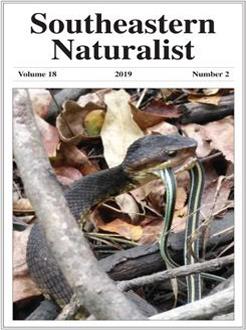This study identified variations in pond bank gradients and associated plant assemblages to better understand niche preferences of 3 species of overwintering anurans—Acris gryllus (Southern Cricket Frog), Lithobates grylio (Pig Frog), and Lithobates sphenocephalus (Southern Leopard Frog)—in northwest Florida (Escambia County). We selected 7 regions of 4 interconnected ponds in a coastal pine flatwoods wetland. We conducted visual and auditory surveys once every week for 10 weeks from 17 January to 24 March 2017. We categorized survey areas along pond shorelines by the plant assemblage composition and species richness, pond bank steepness, and sunlight exposure. We looked for correlations between each species and specific niche characteristics. None of the anuran species studied showed a preference for the amount of sunlight or the slope of the pond bank. However, plant species richness was positively correlated with Southern Cricket Frogs and negatively correlated with Pig Frogs; thus, there was a very strong negative correlation between Pig Frogs and Southern Cricket Frogs. Southern Cricket Frogs, the smallest frog species in this study, prefers high plant species richness, possibly for increased cover from predators, and avoids potential predators like Pig Frogs. Pig Frogs prefer lower species richness, relying on open water for escape. The Southern Leopard Frog showed no vegetation preferences, possibly because the species is more adaptable and has a variety of predator evasion methods. Wetland plant assemblages are an accurate reflection of life-history habits of anurans, particularly predator evasion tactics.
How to translate text using browser tools
31 May 2019
Overwintering Anuran Niche Preferences in a Series of Interconnected Ponds in Northwestern Florida
Caleb M. Bomske,
Nate Bickford
ACCESS THE FULL ARTICLE

Southeastern Naturalist
Vol. 18 • No. 2
May 2019
Vol. 18 • No. 2
May 2019




